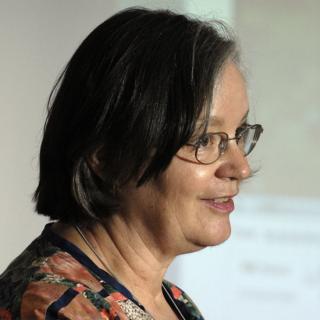Exploring New Media

General Assembly 2008 Event 2063
Presenters: Kenneth Sutton, Rev. Christine Robinson
This workshop was an information-sharing, rather than a hands-on, how-to workshop. Participants range from web-savvy young (and older) adults to grandparents who were there to find out more about the peculiar genes their grandchildren are endowed with that enable them to explore cyberspace with ease and comfort.
Kenneth Sutton is managing editor of UU [Unitarian Universalist] World. Several years ago, the UU World went from a bi-monthly publication to five, then four, times a year with a web supplement that is sent out as a weekly email update to subscribers. (Visit the UU World website to find out more.)
The dissemination of information has moved from early printing techniques to current media in incremental steps, Sutton said. Change is neither good nor bad, and needs to be approached with an open mind and critical insights with regard to audience and purpose. Would this change bring us closer to our goals?
Rev. Christine Robinson is senior minister of First Unitarian Church of Albuquerque, New Mexico. Her blog “iMinister” on blogger.com describes her as a “human being, mom, Unitarian Universalist minister, wife, friend, intrigued with technology and how it can help us minister to each other and our world.” She gives regular updates of her “status” on Facebook to keep her 47 (the number at press time) “friends” on their toes guessing about her next move. Her most recently-updated status informs them that “The Berry Street Essay is done!” and she’s “Free at last!!”
Modern media is not always the fastest source of information. Robinson related the story of her 17-year-old son’s frustrated attempts to find on the Internet the contact information of a person whom he wanted to be mentor, only to have mom whip out the phone book to locate that information in seconds.
Practically everyone at the workshop uses email and belongs to churches with websites, although not everyone visits their church’s website regularly for news and updates. Why? Sutton suggested that this is because not all churches’ websites are kept up to date. In this time of fast news delivery, audiences and readers expect to be informed without delay. People stop visiting sites that have outdated information.
About half of the participants at the workshop have blogs of their own or read blogs regularly. Some blogs are interactive (allow moderated posts from friends) while others are private. Some keep blogs for themselves as an electronic version of journaling while others are less private in content.
YouTube is another way to “spread the good news” about our chosen faith, said Robinson. It is easy and free. Anyone with a video camera and the “techie genes” switched on can post a video sequence of up to ten minutes on YouTube. A search of the site with “Unitarian” turns up more than 2000 hits. In eight months, the YouTube video “Voices of a Liberal Faith” has been viewed over 35,500 times. The First Unitarian Church of Albuquerque has taken advantage of this free avenue of publicity by posting some of Robinson’s shorter sermons there, and there are plans to post testimonials from staff and lay-leaders in a five-minute format. One of the video segments posted by the church solicited an angry response from a viewer who later apologized and then completely turned around in praise and understanding of Unitarian Universalism.
Facebook.com is one of the most popular social networking sites. A list of other sites can be found on Wikipedia. There are now almost 500 separate groups associating themselves as “Unitarians” with the largest one being called “Unitarian Universalism” which has almost 4500 members. Given that Facebook has only become popular since 2003, this growth is phenomenal.
Other sites are great for collaborative work. Robinson and Hutton, in their collaborative efforts to put together this workshop, have not met face to face until the morning of the workshop. They used Google Docs which allows a small group of people to share and edit documents and at the same time, do Instant Messaging with one another. This is more reliable than an email list where sometimes a collaborator is unintentionally left out of the conversation. Robinson is also using Google Docs to share a spreadsheet document with her Worship Committee so that everyone can edit and see at a glance all the volunteer tasks necessary to put together a regular Sunday Service. Another collaborative method is the use of group blogs where conversation threads are organized in a logical manner.
A more sophisticated virtual community exists as Second Life, a virtual reality program where each person chooses an avatar (the choices are limited to young and beautiful) and fully acts out their cyber personality in an animated three-dimensional world. Sutton demonstrated and took us on a tour of the First Unitarian Universalist Church of Second Life. It is an alternative for some people who cannot attend church for one reason or another to meet their spiritual needs. This cyber church now has almost 50 members who pledge.
The question remained at the end of the workshop—”Why wasn’t The First Unitarian Universalist Church of Second Life recognized and welcomed in Wednesday’s Opening Ceremony as one of our new congregations?”
Reported by Kok Heong McNaughton; edited by Jone Johnson Lewis.